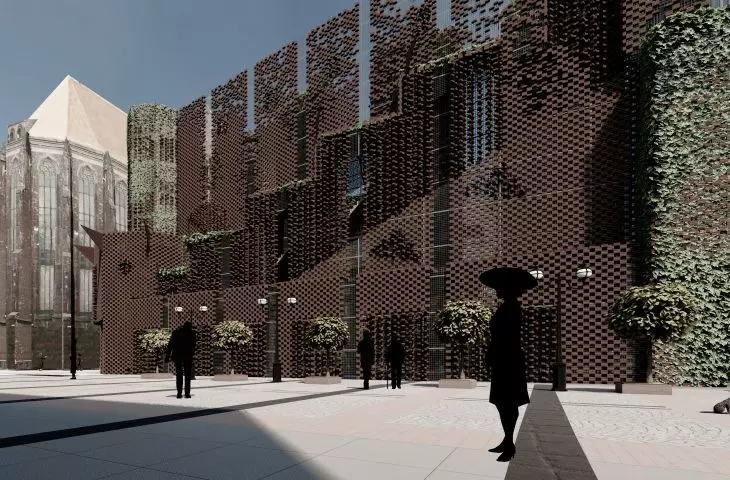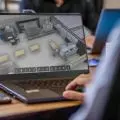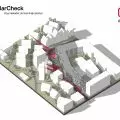In 1993, a controversial icon of capitalist change was created in Wroclaw - the Solpol building. From the beginning it aroused numerous emotions among residents and the conservation community. For many it became an architectural nightmare that had to be removed from the city's skyline as soon as possible. Despite the divisions and controversy, the building also had supporters, noting its architectural and historical value. Many of them fought for the building to be entered in the register of historical monuments, in an effort to protect it from demolition plans. Ultimately, Solpol ceased to exist in 2022. This event sparked further discussions about the role of architecture in urban space and the protection of cultural heritage, and set in motion a number of creative ideas for new development of the site. Jakub Gołda , a student at the Wroclaw University of Technology, proposed the "POSTSOLPOL" project , redefining the original purpose of the demolished building.
schematics
© Jakub Gołda
a non-obvious combination of multiple functions
The history of Solpol did not finally end with its demolition. After its disappearance from the city map, a competition was announced for a new architectural design for the plot on Świdnicka Street, which was won by the ROARK Studio studio, which we wrote about last year: What will be built in place of Solpol?
The alternative to the winning concept is "POSTSOLPOL" by Jakub Golda. The design for a vertical urban farm and art museum on the site of a department store was planned to synthesize non-obvious functions, such as modern urban agriculture combined with meeting the cultural, educational and scientific needs of Wroclaw residents. The planning of the building's functions also took into account its location in the city center, which is the artistic, recreational and service heart of Wroclaw. The main goal of the project was to create a building that perfectly fits into the formal and cultural context of the plot.
visualization
© Jakub Gołda
contemporary reconstructions of objects
The inspiration for "POSTSOLPOL" came from modern reconstruction techniques, based on mapping forms with a metal grid, in the spirit of the work of artists such as Eduardo Tresoldi. As part of the project, an openwork brick façade was attached to the metal structure, referring in its expression to the church of St. Stanislaus, St. Dorothy and St. Wenceslaus, located on a neighboring plot of land, and to the distinctive neo-Gothic architecture of Wroclaw. Elements cut into the brick layer reveal a metal grid, the proportions of which are reminiscent of the church's buttresses. This treatment not only gave rhythm to the clinker façade, but also provided a view of the interior, capturing the atmosphere of the space. The rotating bricks, mounted on metal poles, mimic the layout of the openings and proportions of a demolished department store, highlighting the pastiche of postmodern architecture.
visualization
© Jakub Gołda
new ruins
The layout of the staircases was also mimicked, and the division of Solpol's rooms was marked on the floor, varying the finishing materials. The effect of the cut-out bricks evokes the impression of simultaneous decay and construction, which is meant to symbolize the reconstruction process. This metaphor refers to the style of English Baroque gardens, where objects stylized as ruins are created.
The facade creates harmony with the church, while the green interior walls emphasize the function of the space. Using the properties of ceramic, as a material with thermal stability and the ability to maintain adequate moisture levels, optimal conditions for plants were provided.
visualization
© Jakub Gołda
Inside the building there is a multi-level exhibition space, the centerpiece of which is a vertical autonomous urban farm. This innovative solution has the potential to become a revolutionary model in the context of pro-environmental functions in the city, analogous to how department stores were the center of the development of capitalism in their time. The project not only addresses the architectural heritage of the previous building, but also presents an innovative approach to sustainable urban development, opening up new perspectives for forward-looking urban planning.





























